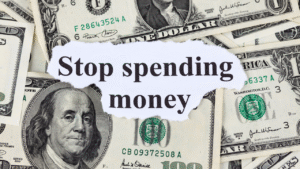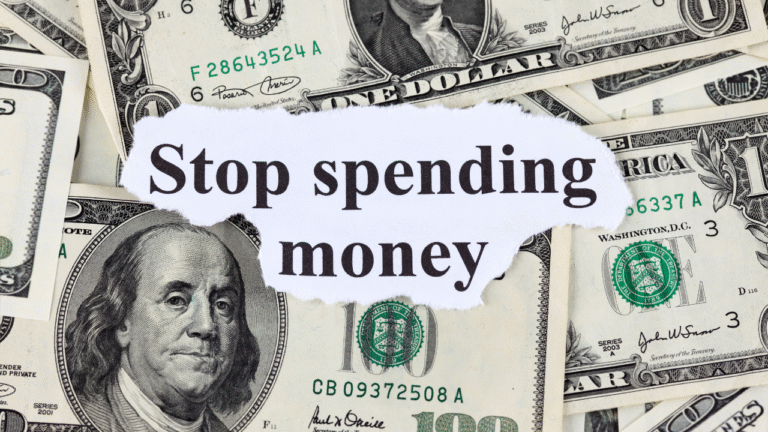Introduction
Debt is something almost everyone deals with at some point. But when your repayments, interest, and financial stress start controlling your life, you might have slipped into what experts call a debt trap. Recognizing the warning signs early can save you from years of financial struggle. In this guide, we’ll explore the 7 clear signs you’re in a debt trap, and more importantly, how to escape it and reclaim your financial freedom. 🚀
Table of Contents
What is a Debt Trap? 🤔
A debt trap happens when your existing debts keep growing, making it harder and harder to repay. Instead of decreasing, your financial burden increases because of high interest rates, late fees, or taking on new loans to pay off old ones. In simple terms: you’re trapped in a cycle where escaping feels nearly impossible.
👉 According to Wikipedia, a debt trap occurs when loans or credit obligations multiply to the point where repayment becomes extremely difficult, often leading to financial collapse.
1. You’re Only Paying the Minimum Balance 💳
If you’re consistently paying only the minimum balance on your credit cards, that’s a red flag 🚨. While it might feel manageable in the short term, most of your payment goes toward interest, not your actual balance.
➡️ Why this is a sign: Minimum payments keep you in debt longer and add thousands in interest over time.
Tip to Escape: Start targeting one debt at a time using the debt snowball or debt avalanche method.
2. Borrowing to Pay Off Existing Debt 🔄
When you find yourself taking new loans to repay old ones, you’re already caught in a cycle. This is one of the clearest indicators of being Buried under debt.
➡️ Why this is a sign: Instead of reducing your debt, you’re only shifting it around.
Tip to Escape: Focus on creating a realistic budget (like Zero-Based Budgeting) so every dollar has a job and you stop relying on new credit.
3. You’re Struggling with Debt Stress 😓
If money worries are keeping you awake at night or affecting your relationships, it’s a major warning sign. Being struggling with debt isn’t only about money—it’s also about your mental well-being.
➡️ Why this is a sign: Stress from unmanageable debt can lead to emotional burnout, poor decision-making, and health issues.
Tip to Escape: Seek professional financial counseling or talk to a nonprofit debt relief agency that can negotiate lower rates on your behalf.
4. Living Paycheck to Paycheck Without Savings 💸

Do you run out of money before your next paycheck arrives? If you can’t build even a small emergency fund, chances are you’re in a debt trap.
➡️ Why this is a sign: Without savings, even small emergencies (like a car repair) push you deeper into borrowing.
Tip to Escape: Automate savings—even a tiny portion of your income. It builds a safety net and reduces future borrowing.
5. Using Credit for Daily Essentials 🛒
If you’re swiping your card for groceries, gas, or utility bills, you’re relying on debt to survive. This is a dangerous sign of financial imbalance.
➡️ Why this is a sign: Using credit for basics creates a cycle of dependence, making it nearly impossible to break free.
Tip to Escape: Track your daily spending and cut non-essential expenses. Simple lifestyle changes can free up cash for essentials.
6. Overwhelming Interest and Penalties 📉
High interest rates and late fees can double or triple what you owe. If your interest charges are higher than your actual repayments, you’re stuck in a vicious cycle.
➡️ Why this is a sign: Even if you’re paying regularly, your balance keeps growing.
Tip to Escape: Call your creditors and negotiate lower interest rates or consolidate debt into a single loan with better terms.
7. No Plan for Repayment or Escape 🗓️
If you don’t have a clear timeline for when you’ll be debt-free, you’re likely in a trap. Having no plan is the fastest way to stay stuck.
➡️ Why this is a sign: Without structure, you’ll continue the cycle of borrowing and repayment endlessly.
Tip to Escape: Create a step-by-step repayment plan. Prioritize debts with the highest interest rates and automate payments.
How to Escape a Debt Trap 🔑
Escaping a debt trap takes patience, strategy, and discipline. Here are practical steps:
- Face the Numbers: List all your debts, balances, and interest rates.
- Prioritize: Decide between the snowball (smallest balance first) or avalanche (highest interest first) method.
- Cut Expenses: Remove unnecessary spending to free up repayment money.
- Boost Income: Take on a side hustle or freelance work to accelerate payments.
- Seek Help: If overwhelmed, consult a financial advisor or credit counselor.
- Change Habits: Build financial discipline with budgeting methods like zero-based budgeting.
Remember, how to escape a debt trap is about small consistent actions that compound over time.
Overcoming Financial Crisis 🌍

A financial crisis can happen to anyone. Job loss, medical emergencies, or unexpected expenses can push you into debt. But overcoming it is possible:
- Build a small emergency fund (even ₹500 or $20/month adds up).
- Avoid predatory lenders.
- Learn from mistakes—improve your financial literacy.
By tackling debt head-on, you’ll move from being Locked in debt to building lasting stability.
❓ FAQs: About Debt Traps
Q1. What is a debt trap and how does it work?
A debt trap happens when you borrow money and then take on more loans just to repay old ones. High interest and fees keep increasing your balance, making it difficult to escape.
Q2. How do I know if I’m stuck in a debt trap?
Signs include paying only minimum balances, borrowing to repay old debt, relying on credit for essentials, and feeling constant financial stress.
Q3. What is the fastest way to escape a debt trap?
The fastest way is to create a strict budget, cut unnecessary expenses, and focus on repaying high-interest debt first. Debt consolidation or credit counseling can also help.
Q4. Can debt traps affect my credit score?
Yes ✅. A debt trap often leads to missed or late payments, which can lower your credit score and make borrowing more expensive in the future.
Q5. How do I get out of credit card debt quickly?
The fastest ways include making more than the minimum payment, focusing on high-interest balances first, and considering balance transfers or consolidation loans.
Final Thoughts ✨

Being in a debt trap isn’t the end of your financial story. By identifying the signs early, making smart money choices, and sticking to a clear plan, you can escape the cycle. Remember: debt doesn’t define you—it’s just a challenge you can overcome with discipline and persistence. 💪
👉 Start small, track your expenses, and commit to change today. Your future self will thank you.










